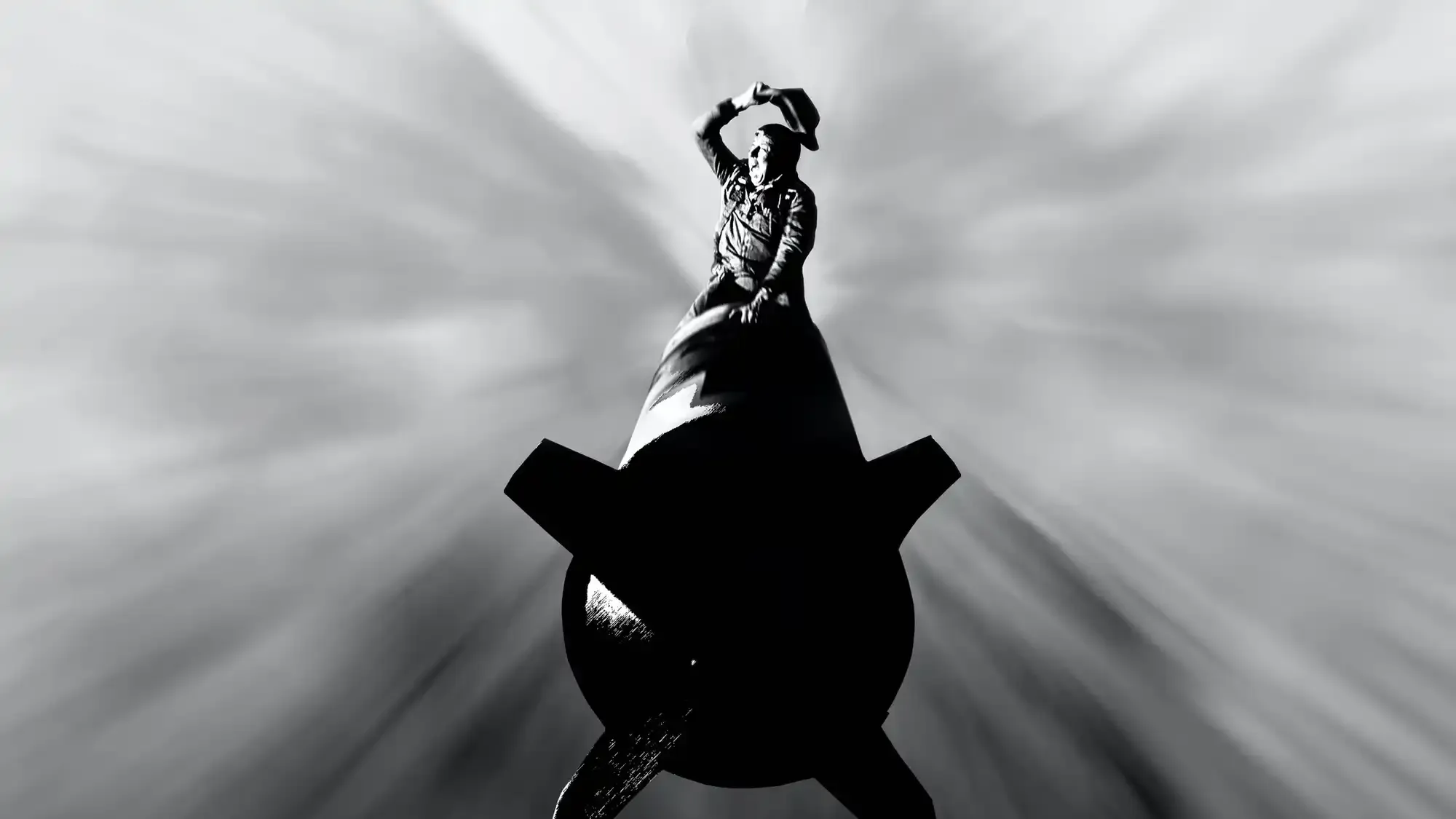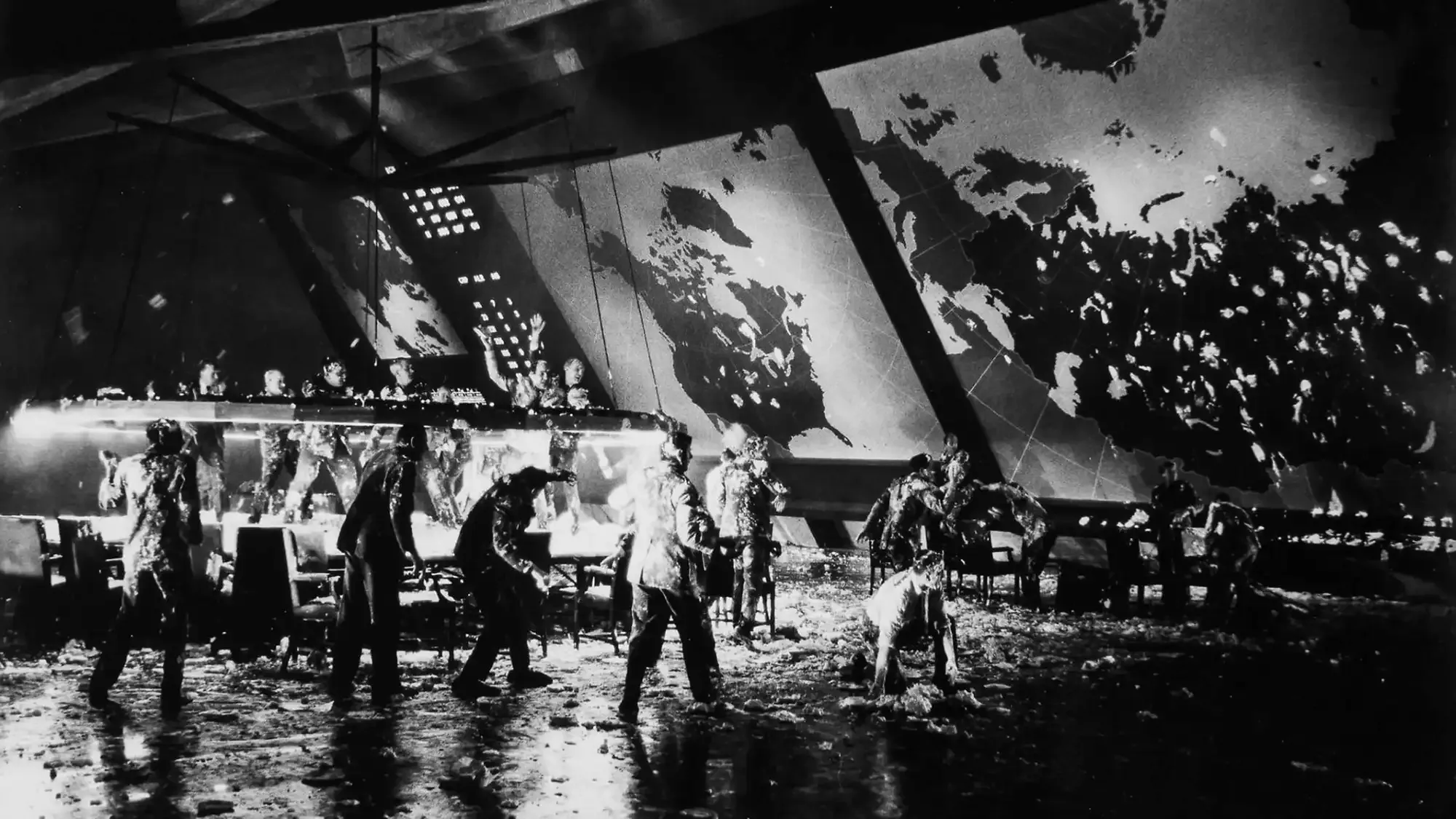"A Darkly Hilarious Satire on the Absurdity of War"
Posted Tuesday, May 14, 2024 42
Dr. Strangelove or: How I Learned to Stop Worrying and Love the Bomb is a black comedy that takes a satirical look at the Cold War era and the looming threat of nuclear annihilation. The plot follows a series of absurd events set in motion when a deranged US Air Force general orders a nuclear attack on the Soviet Union, triggering a cascade of comical and catastrophic consequences.
The movie explores themes of political paranoia, the absurdity of war, and the dangers of unchecked power. Its tone is darkly comedic, blending satire with a sense of impending doom to create a unique and unsettling atmosphere that is both thought-provoking and entertaining.
The film features outstanding performances from its ensemble cast, including Peter Sellers in three distinct roles, each one a memorable and absurd character. The actors deliver their lines with pitch-perfect comedic timing, bringing a sense of urgency and absurdity to their roles that adds to the film`s overall impact.
Stanley Kubrick`s direction is masterful, skillfully blending satire, suspense, and dark humor to create a compelling and immersive experience for the audience. His meticulous attention to detail and the pacing of the film keeps the audience engaged from start to finish.

The score of the film complements its dark humor and adds to the tension, enhancing key moments and punctuating the absurdity of the unfolding events with a sense of urgency. The use of music effectively intensifies the chaotic and impending doom throughout the movie.
The cinematography of Dr. Strangelove is striking, with stark black-and-white imagery that adds to the film`s ominous atmosphere. The use of long takes and unique camera angles enhances the visual storytelling, capturing the absurdity and tension of the narrative.
The production design effectively captures the Cold War era, from the war room set with its high-tech equipment to the cramped interior of the bomber plane. The attention to detail in the sets and props immerses the audience in the world of the film, adding to the overall authenticity and impact of the story.
While the film may not rely heavily on special effects, the few that are used effectively serve the story, adding to the absurdity and chaos of the situations depicted. The subtle use of effects contributes to the overall atmosphere of the film without overshadowing the narrative or performances.

The editing of the film is sharp and precise, capturing the rapid-fire dialogue and escalating tension with seamless transitions and pacing. The editing effectively amplifies the impact of key moments, heightening the absurdity and urgency of the narrative.
The pace of the film is brisk, keeping the audience on the edge of their seats as the absurd situation unfolds. The escalating tension and rapid-fire dialogue drive the narrative forward, creating a sense of urgency and unpredictability that captivates the viewer from beginning to end.
The dialogue in Dr. Strangelove is sharp, witty, and packed with memorable lines that capture the absurdity and wit of the screenplay. The rapid and often frantic exchanges between characters add to the comedic and chaotic tone of the film.
While Dr. Strangelove is a brilliant and influential film, some viewers may find its dark humor and satirical approach to be unsettling or jarring. The film`s portrayal of the absurdity of war and the threat of nuclear annihilation may not be to everyone`s taste, and its comedic treatment of serious subject matter could be seen as controversial.
Dr. Strangelove or: How I Learned to Stop Worrying and Love the Bomb is a darkly hilarious and thought-provoking satire that remains as relevant and impactful today as it was upon its release. Its sharp wit, outstanding performances, and masterful direction make it a must-see film for anyone with an appreciation for dark comedy and political satire.